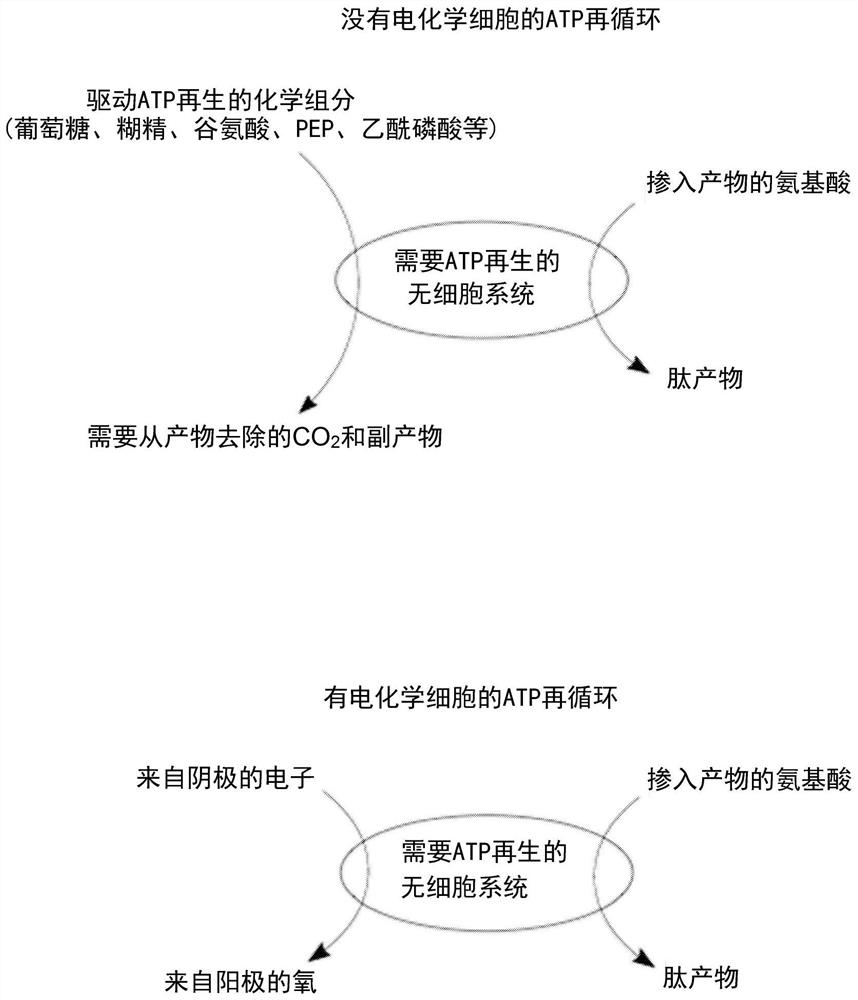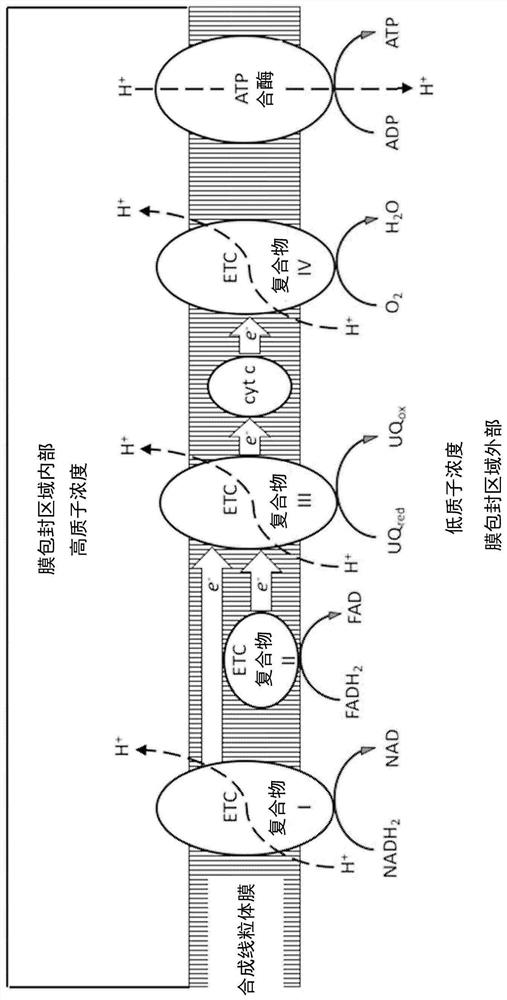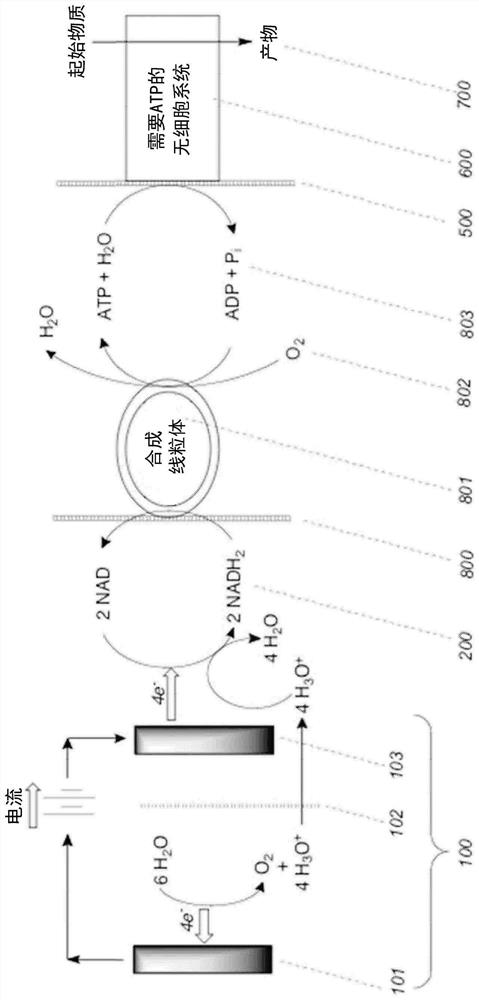Cell-free composition for ATP regeneration and use thereof
A cell-free composition, ATP synthase technology, applied in the field of cell-free systems, which can solve the problems of low efficiency and cost
- Summary
- Abstract
- Description
- Claims
- Application Information
AI Technical Summary
Problems solved by technology
Method used
Image
Examples
Embodiment 1
[0135] Example 1. Preparation of lipids, polymers and hybrid liposomes
[0136] Liposomes can be prepared from soybean L-α-phosphatidylcholine (95%, Avanti Polar Lipids) dissolved in 2:1 chloroform-methanol (V / V) and stored at -20°C until use. First, 10 mg of the solubilized lipids were settled in a round-bottom glass bottle, and then the solvent was evaporated under a gentle stream of nitrogen gas. Can be used containing 20mM HEPES (pH 7.5), 2.5mMMgS0 4 , 50 mg / ml sucrose in vesicle buffer to rehydrate lipid films and resuspend at a final lipid concentration of 10 mg / ml by gentle vortexing. The suspension of multilamellar vesicles (MLV) was subjected to 7 freeze-thaw cycles (1 min in liquid nitrogen, then in a 35°C water bath until fully thawed, followed by 30 sec vortex). Finally, the suspension was extruded (21 times) through 100 nm pores (polycarbonate membrane, Whatman) to homogenize the size and number of layers of the liposomes in the suspension.
[0137] Films of hy...
Embodiment 2
[0139] Example 2. Protein co-reconstitution into liposomes, polymers and hybrid liposomes
[0140] The optimized protocol for membrane protein reconstitution is as follows. Briefly, for a theoretical protein / liposome ratio of about 1 ATP synthase and 2-10 ETC, 0.14 mM pre-formed liposomes (100 pL) can be mixed with 0.14 mM sodium cholate in the presence of 0.4% sodium cholate. mMATP synthase and 0.70 mM ETC were mixed. The reconstituted mixture can be incubated at room temperature for 30 minutes with gentle agitation, and then the detergent is removed using a prepacked size exclusion column (PD MiniTrap G-25, GE Healthcare). To determine the lower production limit of the energy regeneration system, 1 ATP synthase can be reconstituted per liposome. Higher rates of ATP synthesis are readily achieved as the number of enzymes per vesicle increases. Considering the random orientation of the reconstituted ETCs, excess enzymes can be incorporated into nanocontainers (5 per liposom...
Embodiment 3
[0145] Example 3. Determination of respiration-driven ATP production
[0146] Respiration-driven ATP production can be measured as follows.
[0147] in 480 μl of measurement buffer (20 mM Tris-P0 4 (pH 7.5), 10 μl luciferin / luciferase assay (CLSII, prepared according to manufacturer’s protocol), 2 μl ADP (8.45 mM stock, ultrapure) and 1 μl DTT (1 M stock) for 10 μl liposomes , and the baseline can be recorded. Reactions can be started by adding 1 μl of ubiquinone Q1 (10 mM stock) and ATP synthesis can be recorded. At the end of each measurement, 3 [mu]l of ATP (5 mM stock) can be added to normalize the signal against the determined amount of ATP. ATP productivity can be reported as the mean of at least 3 individual preparations (each measured in 3 replicates) and the standard deviation.
PUM
| Property | Measurement | Unit |
|---|---|---|
| diameter | aaaaa | aaaaa |
| molecular weight | aaaaa | aaaaa |
Abstract
Description
Claims
Application Information
 Login to View More
Login to View More - R&D
- Intellectual Property
- Life Sciences
- Materials
- Tech Scout
- Unparalleled Data Quality
- Higher Quality Content
- 60% Fewer Hallucinations
Browse by: Latest US Patents, China's latest patents, Technical Efficacy Thesaurus, Application Domain, Technology Topic, Popular Technical Reports.
© 2025 PatSnap. All rights reserved.Legal|Privacy policy|Modern Slavery Act Transparency Statement|Sitemap|About US| Contact US: help@patsnap.com



